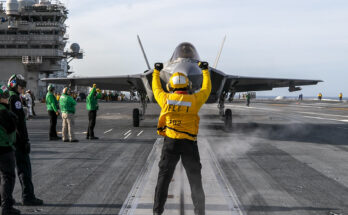by C. Zachary Hofer, Electronic Systems Analyst, Forecast International.
Although the Canadian Forces’ efforts to replace their aging Fixed Wing Search and Rescue (FWSAR) aircraft were formalized in 2004, advancements were stymied repeatedly. On March 31, this changed when Canada released a new Request for Proposals (RFP); the due date is September 2015. The all-new aircraft will feature a new electronics suite with new radars and new electro-optics, making for a lucrative prospect for airborne electronics manufacturers.
The Royal Canadian Air Force (RCAF) currently operates six CC-115 Buffalo (DHC-5) and 13 C-130H Hercules aircraft in the SAR role. The DHC-5 went out of production in 1986 and the C-130H had reached the end of its heyday by the late 1990s. According to the Canadian Military Journal, the RCAF’s DHC-5s date mostly from the 1960s and many of the C-130Hs were built in the 1970s; both platforms carry similarly dated surface-search radar architectures. The need to revive the aging fleet with new platforms and electronics is clear, especially considering the dual challenges of Canada’s broad range of terrain and expansive territory.
The FWSAR requirement stipulates the choice of one or two platforms, and to date, five manufacturers have emerged as strong potential bidders. The leading contenders are Lockheed Martin with the C-130J which, like the U.S. Coast Guard’s HC-130Js, could carry the Exelis APY-11 radar (a licensed Elta EL/M-2022) and FLIR Systems’ Star Safire III EO/IR sensor, and Alenia Aermacchi with the C-27J Spartan. The probable electronics setup for the Spartan is currently unknown.
It is believed that if Canada selects the C-27J, it will follow the U.S. Coast Guard’s lead with the electronics setup. The USCG is in the process of identifying a surface-search radar for its HC-27Js, a search that has been complicated by the service’s lack of sufficient technical data. A belly-mounted or nosecone-mounted radar are both options.
The three other candidates are viewed as distinctly less likely to win the award. These are: Airbus Military’s C-295, Embraer’s KC-390, and Viking Air’s DHC-5NG. Brazil’s Embraer has only recently been identified as a prospective bidder. Its KC-390 aircraft could be hurt by the fact that Embraer did not roll out its first prototype until October 2014; the plane’s equipment set, like the C-27J’s, is unknown at this time, but could feature an Italian-made Selex ES Gabbiano radar.
Airbus’ C-295 may have a greater chance of winning the contest than the KC-390 and DHC-5NG. In its most common SAR outfits, the C-295, like the C-130J, carries the APY-11 (EL/M-2022). It also carries the APN-241 navigation radar in its nose, as does the C-27J, which could give the two aircraft a similar layout if the USCG selects a nosecone-mounted surface-search radar for its C-27Js and the technology is then ported to the C-295.
Even though the DHC-5NG is produced by Canadian company Viking Air, it is currently in a distant last place. The platform has seen limited market uptake and its electronics are unknown.
If the performance of past SAR choices is a guide, the winning FWSAR platform or platforms could be a part of the RCAF’s fleet for a very long time. Considering the potential need for radar upgrades and support contracts, competition for this award will be hard fought. Circumstances favor the RCAF following the USCG’s example and procuring the C-130J with the APY-11 radar and/or the C-27J with an as-yet-unidentified radar. However, the future is never known until it happens.
For 50 years, Forecast International intelligence reports have been the aerospace and defense industry standard for accurate research, analysis, and projections. Our experienced analysts compile, evaluate, and present accurate data for decision makers. FI's market research reports offer concise analysis of individual programs and identify market opportunities. Each report includes a program overview, detailed statistics, recent developments and a competitive analysis, culminating in production forecasts spanning 10 or 15 years. Let our market intelligence reports be a key part of reducing uncertainties and mastering your specific market and its growth potential. Find out more at www.forecastinternational.com



